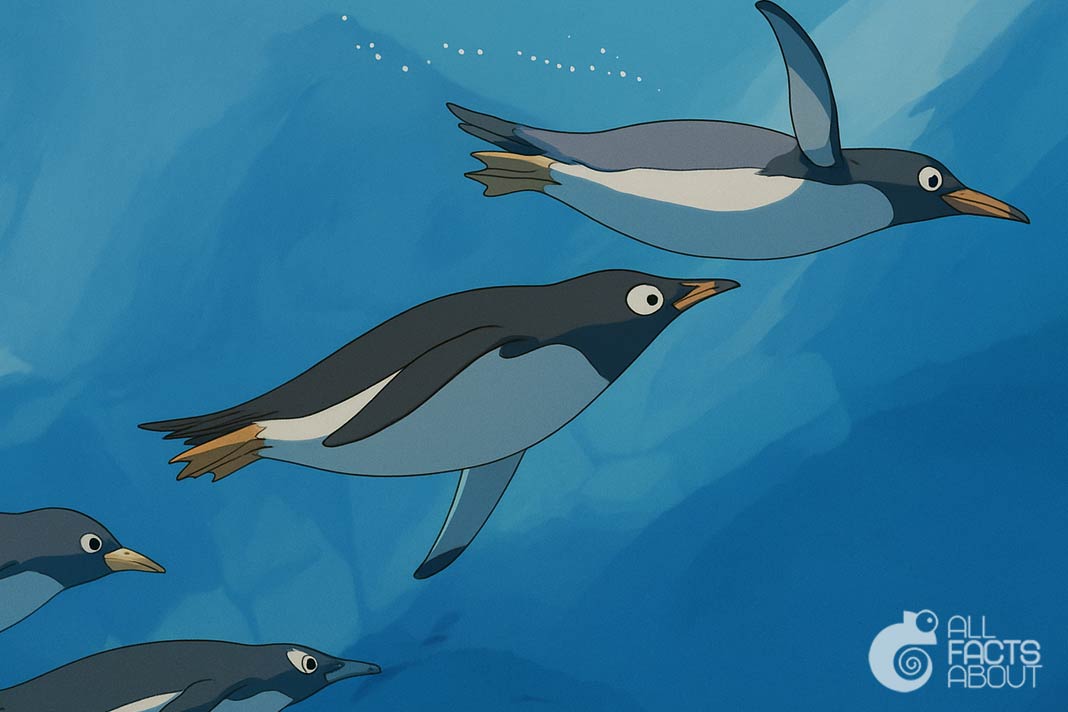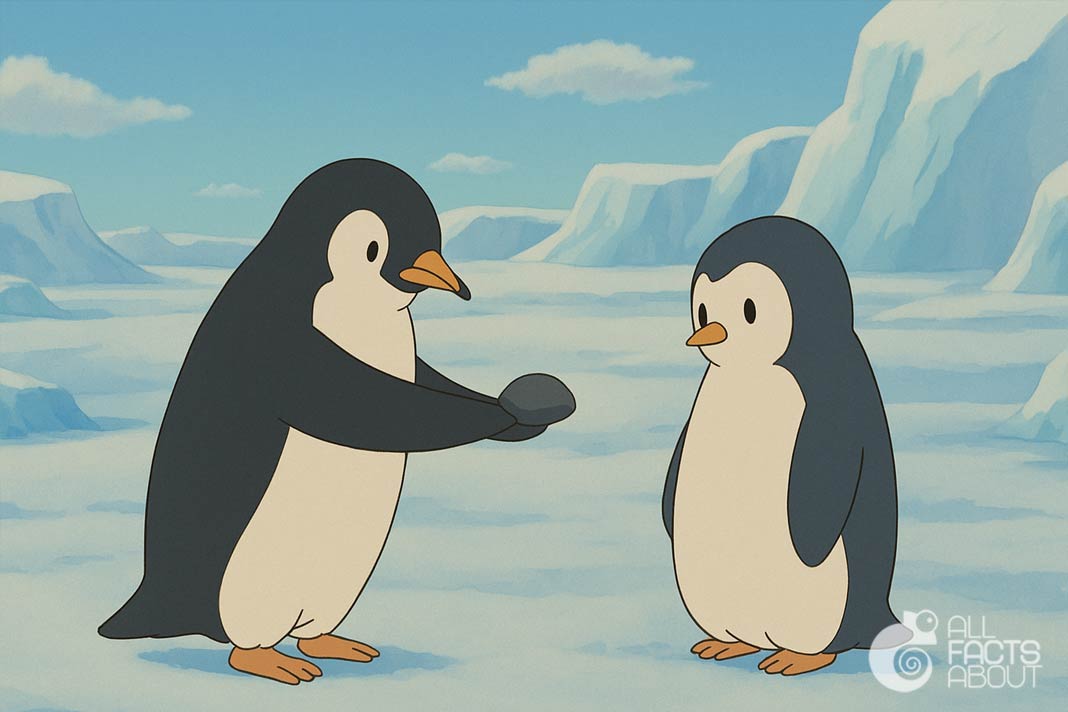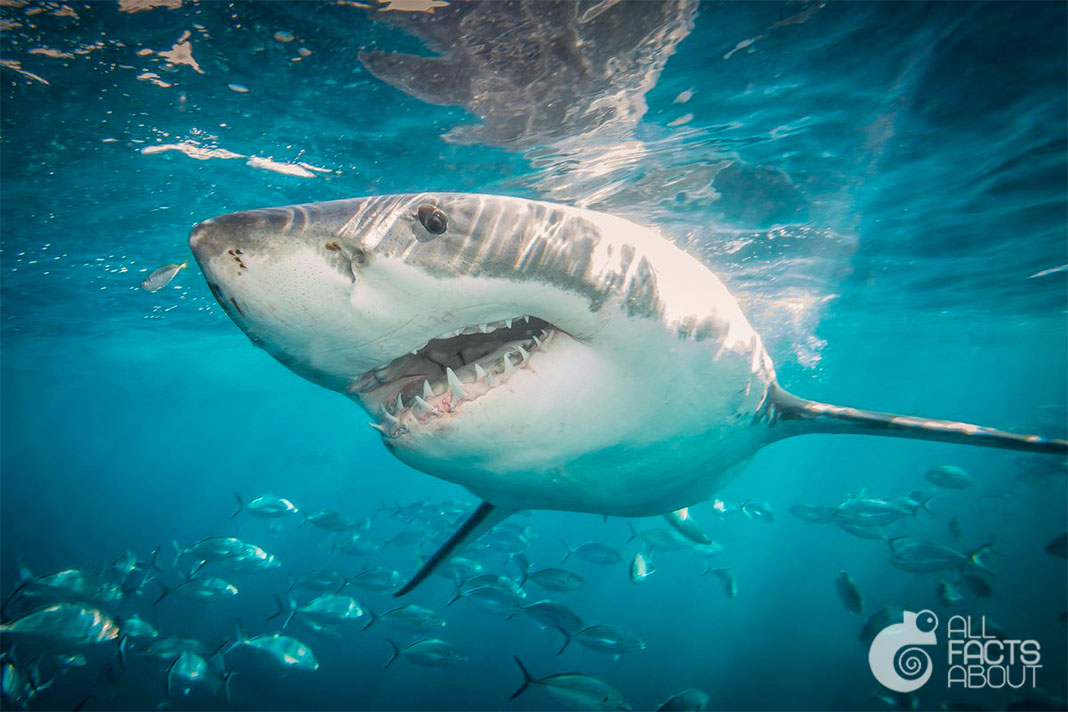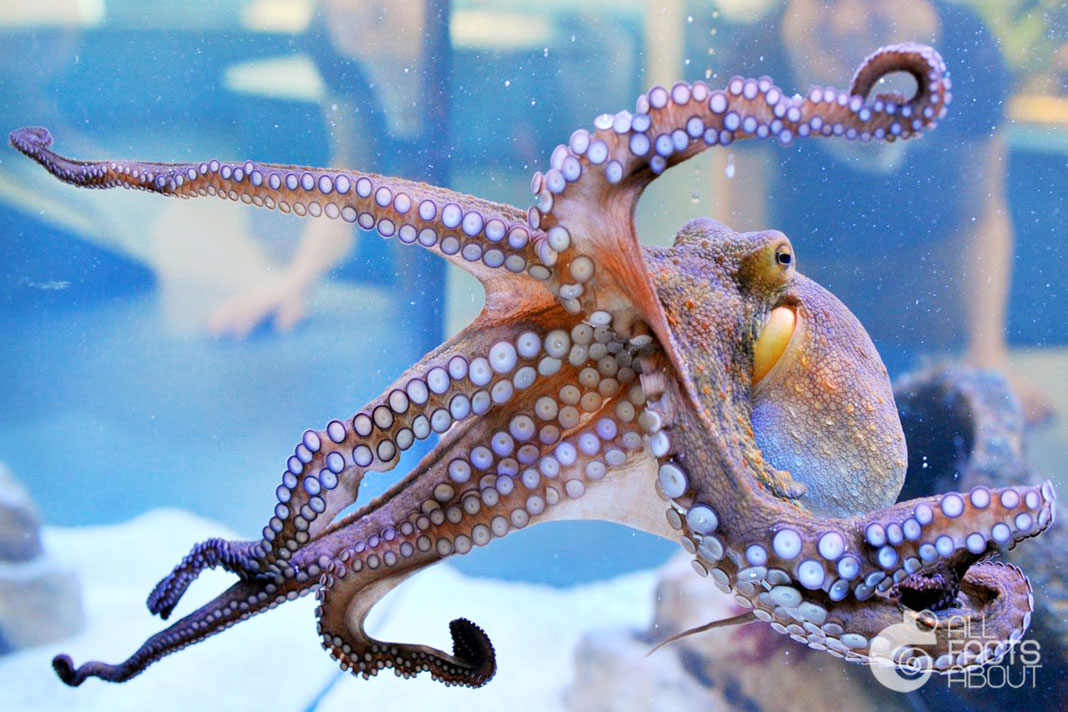Penguins are funny and clumsy on land, but as soon as they get into the water they become very agile and graceful. If you want to know if penguins can fly, the answer is yes they are flying birds, but they are flying only in water.
1. Some extinct penguin species that lived 37 to 40 million years ago were huge, such as the penguin Palaeeudyptes klekowskii was over two meters tall and weighed more than 170 kilograms.
2. Penguins are mostly monogamous animals and meaning they partner with one mate for life, despite the fact that most of their time they spend apart from each other.
3. Penguins are able to jump out of the water to a height of more than one and a half meters.
4. Penguins stay warm in the freezing cold waters thanks to a thick layer of fat and feathers that are closely adjacent to each other. Weirdly, most penguin species have a body temperature of 38 degrees Celsius, but they can survive temperatures well below – 50 degrees Celsius.
5. The emperor penguin can dive to a depth of more than half a kilometer and hold its breath for almost half an hour.

Emperor penguins are skilled swimmers and deep divers, holding their breath for up to 30 minutes.
7. Sir Nils was the first penguin who was knighted with the approval of King Harald V of Norway in 2008. This is because the penguin is the mascot of his guard.
8. Female emperor penguins that have lost their own brood, usually trying to steal a chick from another penguin family.
9. The emperor penguin is the largest penguin in the world, whose height reaches 120 cm, and the smallest is a little blue penguin. His average height is only 33 cm.
10. Most penguins swim underwater at around four to 9 kilometers per hour, but the fastest Gentoo penguin can reach top speeds of 35 kilometers per hour.
11. Some penguins, such as Adelie penguins, use smooth pebbles to impress potential mates and build their nests. Males often search for the perfect pebble and present it as a “gift,” beginning a bonding ritual that may lead to long-term pairing.

Adelie penguins attract mates by gifting pebbles – a unique part of their courtship and nest-building behavior.
13. There are 17 species of penguins, each slightly different. Macaroni penguins are the most abundant species in the world – with almost 24 million individuals.
14. Penguins have excellent underwater vision, allowing them to spot fish and other prey even in dark or murky ocean waters, though their eyesight is not as sharp on land. This adaptation helps them become efficient hunters beneath the surface, where they spend most of their lives.
15. Penguins can safely drink seawater thanks to a special gland located above their eyes that filters out excess salt. This salt gland ensures they stay hydrated even when they cannot find fresh water in their icy habitats.
16. In the wild, penguins live 10–20 years, but in captivity, some reach over 30. Lifespan depends on predators, food, and habitat.

Galapagos penguins live in warm regions near the equator, adapted to tropical environments unlike their Antarctic relatives.
18. Penguins use distinct vocalizations and body gestures to identify their mates and chicks in large, noisy colonies. Each penguin has a unique call that functions like a fingerprint in the crowd.
19. Although most penguins are black and white, rare individuals may have unusual plumage colors due to genetic variations, including brown, gray, or even golden feathers. These rare color mutations are called leucism.
20. Once a year, penguins go through a “catastrophic molt,” shedding all feathers and growing new ones. During this time, they cannot swim or feed and survive on stored fat.




